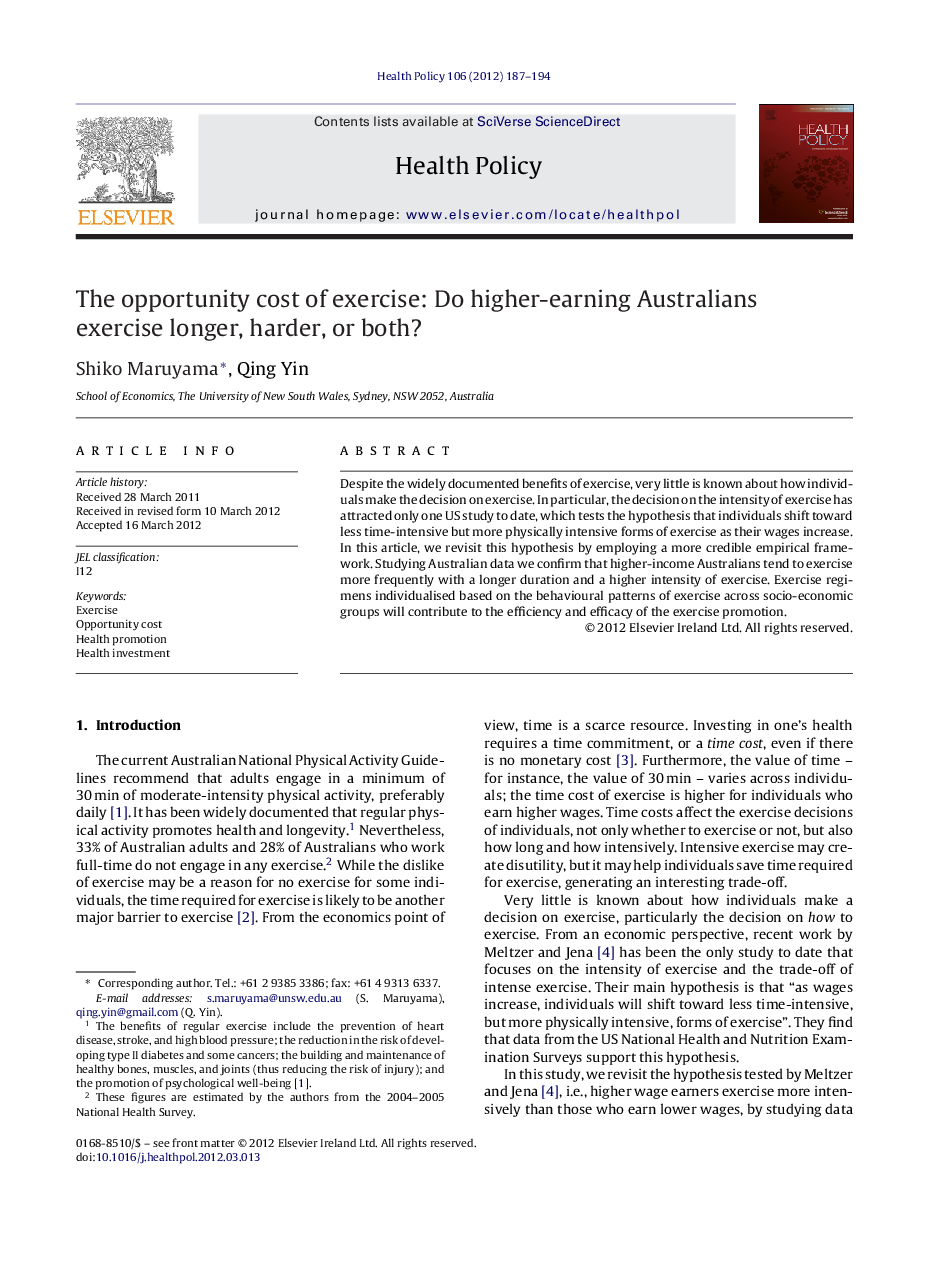| Article ID | Journal | Published Year | Pages | File Type |
|---|---|---|---|---|
| 4198039 | Health Policy | 2012 | 8 Pages |
Despite the widely documented benefits of exercise, very little is known about how individuals make the decision on exercise. In particular, the decision on the intensity of exercise has attracted only one US study to date, which tests the hypothesis that individuals shift toward less time-intensive but more physically intensive forms of exercise as their wages increase. In this article, we revisit this hypothesis by employing a more credible empirical framework. Studying Australian data we confirm that higher-income Australians tend to exercise more frequently with a longer duration and a higher intensity of exercise. Exercise regimens individualised based on the behavioural patterns of exercise across socio-economic groups will contribute to the efficiency and efficacy of the exercise promotion.
